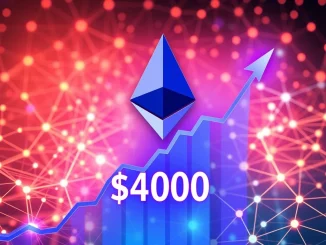
Just when the crypto community was buzzing about the exhilarating Bitcoin rally, a note of caution emerges from crypto services provider Matrixport. Have we hit a pause in the upward trajectory? According to their recent analysis, the sustainability of this Bitcoin rally might be in question, pointing towards a critical factor: slowing stablecoin inflows. Let’s dive into what this means for the future of Bitcoin and the broader crypto landscape.
What’s Behind the Bitcoin Rally Stall? Decoding Stablecoin Inflows
Matrixport’s recent update on X has sparked discussions across the crypto sphere. Their core argument is compelling: the current market consolidation isn’t just a random fluctuation. It’s potentially rooted in the deceleration of stablecoin inflows. But why are these inflows so crucial, and what does a slowdown signify?
- Stablecoins as Fuel: Think of stablecoins as the fuel that powers the crypto engine. They are often used as a bridge between fiat currencies and the crypto market, providing readily available capital to buy cryptocurrencies like Bitcoin.
- Inflow Indicator: The rate at which new stablecoins are minted and enter the market can be a significant indicator of fresh capital entering the crypto space. A surge in minting usually suggests increased investor interest and potential buying pressure.
- Matrixport’s Observation: Matrixport highlights that this vital indicator is showing signs of slowing down. This deceleration suggests that the influx of new capital into the crypto market isn’t as robust as it once was, potentially putting a brake on the Bitcoin rally.
So, what could be causing this slowdown in stablecoin inflows? Matrixport offers a couple of plausible explanations:
- Sufficient Reserves: Stablecoin issuers might be holding adequate reserves, leading to a reduced need for rapid minting. This could indicate a period of market equilibrium, where demand is met by existing stablecoin supply.
- Weakening Market Demand: Alternatively, a slowdown in minting could signal a decrease in market demand. If investors are becoming less eager to inject new capital into the crypto market, the demand for new stablecoins might naturally decline.
Regardless of the exact reason, the underlying message from Matrixport is clear: the pace of fresh capital entering the crypto ecosystem has diminished, and this could be a critical factor contributing to the current market consolidation.
Market Consolidation: More Than Just a Pause?
The term “market consolidation” often gets thrown around in trading circles, but what does it truly mean in the context of Bitcoin and crypto? And why is Matrixport highlighting it as a consequence of slowing stablecoin inflows?
Market consolidation essentially refers to a period where the price of an asset, like Bitcoin, moves sideways within a defined range, rather than experiencing a strong upward or downward trend. It’s often seen as a phase of indecision or equilibrium in the market, where buying and selling pressures are relatively balanced.
Here’s why slowing stablecoin inflows can lead to market consolidation:
- Reduced Buying Pressure: With less fresh capital entering the market via stablecoins, the buying pressure that typically fuels rallies diminishes. This can prevent Bitcoin from breaking out to new highs.
- Uncertainty and Hesitation: Slower inflows can also breed uncertainty among investors. If the market isn’t seeing a consistent influx of new money, some investors might become hesitant to buy aggressively, contributing to the sideways price action of market consolidation.
- Natural Market Cycle: Consolidation phases are a natural part of market cycles. After a period of rapid growth, like a Bitcoin rally, markets often need to take a breather to digest gains and establish a new base before the next potential move.
Institutional Caution and the Hawkish Fed: A Double Whammy for Crypto Market?
Matrixport doesn’t stop at just stablecoin inflows. They also point towards another significant factor potentially dampening the crypto market’s enthusiasm: institutional caution linked to the U.S. Federal Reserve’s (Fed) hawkish stance from their December 2024 meeting. How does the Fed’s policy play into the crypto market dynamics?
The Federal Reserve, the central bank of the United States, plays a crucial role in shaping global financial conditions. A “hawkish stance” from the Fed typically implies a more aggressive approach to controlling inflation, often through measures like raising interest rates. Here’s how this can impact the crypto market:
- Risk-Off Sentiment: When the Fed adopts a hawkish stance, it can trigger a “risk-off” sentiment in broader financial markets. Investors tend to become more cautious and move away from riskier assets like cryptocurrencies in favor of safer havens like government bonds or cash.
- Increased Borrowing Costs: Higher interest rates make borrowing more expensive. This can reduce the attractiveness of leveraged trading and investment strategies often employed in the crypto market.
- Institutional Investor Hesitation: Large institutional investors, who are increasingly important players in the crypto space, are particularly sensitive to macroeconomic signals and Fed policy. A hawkish Fed can lead to increased caution and a reluctance to deploy significant capital into the crypto market, further slowing down capital inflows.
Therefore, the combination of slowing stablecoin inflows and institutional caution driven by the Fed’s stance creates a challenging environment for a sustained Bitcoin rally. It’s a confluence of factors that suggests the current market consolidation might persist for a while.
Navigating the Current Crypto Landscape: Key Takeaways
So, what are the crucial takeaways from Matrixport’s analysis, and how should crypto enthusiasts and investors navigate this period of market consolidation?
- Monitor Stablecoin Inflows: Keep a close eye on stablecoin minting and inflow metrics. These can serve as valuable early indicators of shifts in market sentiment and capital flows.
- Understand Macroeconomic Influences: Pay attention to macroeconomic factors, particularly Fed policy and interest rate expectations. These external forces can have a significant impact on the crypto market.
- Prepare for Volatility: Market consolidation phases can still be volatile. Be prepared for potential price swings and manage your risk accordingly.
- Focus on Fundamentals: In times of market uncertainty, it’s even more important to focus on the fundamentals of crypto projects you are interested in. Look at technology, adoption, and long-term potential.
- Patience is Key: Crypto markets are cyclical. Market consolidation is a natural part of the cycle. Patience and a long-term perspective can be valuable assets in navigating these phases.
Conclusion: A Pause, Not an End, to the Crypto Story?
Matrixport’s analysis provides a crucial perspective on the current state of the crypto market. While the slowing stablecoin inflows and institutional caution might have temporarily stalled the Bitcoin rally, it’s essential to remember that this is likely a pause, not necessarily the end of the crypto story. The crypto market is dynamic and ever-evolving. Understanding the underlying factors influencing market movements, like stablecoin flows and macroeconomic policies, empowers investors to make informed decisions and navigate the exciting, yet often unpredictable, world of cryptocurrencies with greater confidence. The key takeaway? Stay informed, stay vigilant, and stay prepared for the next chapter in the crypto evolution.



